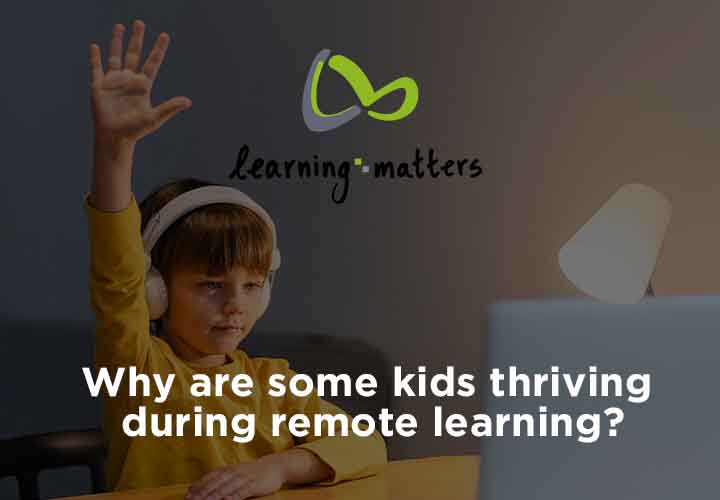COVID-19 has remodeled all facets of our daily lives. Teachers and students in particular have had to resort to virtual ways in order to engage, educate and be educated. While the rather forced transition to online teaching and learning hasn’t been easy on all students, there seem to be some who are surprisingly thriving in this medium. Let’s take a closer look at why some kids are doing exceedingly well in remote learning.
The Brighter Side
While the pandemic has shrunk the lives of many kids to just their homes and screens, not all kids are sad about it. So, what are the aspects of online learning that have aided some kids to thrive?
-
Support of Self-Pace
Flexibility is the hallmark of e-learning. Students who do well in self-paced, flexible learning situations therefore thrive in this environment. It is this factor that hooks certain students in and keeps their attention span intact. As online materials and courses are accessible at any hour of the day, it makes students feel more in control. With recorded videos and e-notes available, students can replay and retain information anytime, in a better manner, and are able to learn at their own pace. This helps students take ownership as they’re no longer under the micromanagement of the regular school day in the teacher’s physical presence. -
Dare we say, the Devil is in the Distractions
It wouldn’t be an exaggeration to say that students have an immensely busy schedule during regular schooling. During the school day, students constantly remain on the go with sports, club meetings, extra-curricular activities, tuitions and more. But the restrictions imposed by the pandemic have cut short many of these activities enabling students to focus better on only their online classes and learning. -
Sleep - the Best Self-Care!
Just like many adults, children too can be night owls or early birds. The former are those who are very productive in the evening and nighttime. Most students are no longer waking up to a very early alarm clock now. The kids who have a hard time staying alert in their early morning classes are now able to get their work done in the evenings and nights. They are able to get their sleep at their own timetable now. Remote learning has provided such students with the desired flexibility that has boosted productivity. -
Home - the Safe Haven!
While much has been discussed about missing in-person connections and relationships at school, there are students who have benefited from this. Typically, these are students for whom school socialization is fraught with anxiety. Such as students with ADHD or students who have been victims of physical or verbal bullying while at school. For them, being able to learn from home, the ultimate safe space is a huge relief. Learning in their ‘safe place’ has boosted their confidence and productivity.
So, is this a long-term solution?
Remote learning has been a disaster for many students. But some kids have thrived. This somehow throws light on the lack of inclusivity in our education system as well.
Even as more schools are extending remote learning indefinitely, a lot of students just can’t wait to get back into the classroom. However, it is clear that even after it is deemed safe to return to school, it won’t be a complete return to what was considered normal.
Forms of remote learning have existed since the 19th century, but it was never mainstream. With the COVID era, we all have witnessed the rise of numerous online learning tools and platforms. It could be possible that remote learning, just like homeschooling, may be considered as a permanent viable option by many.


Comments